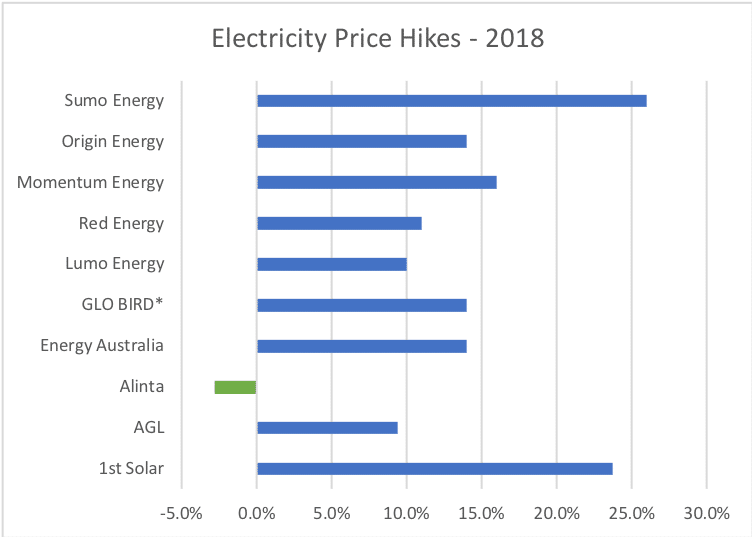Investor News
Power Bill Panic

The below articles continue to hold a spotlight on the causes and effects of our escalating electricity prices.
- 17 Jan 2018: "Businesses face power price hikes of up to 200 per cent" - Sydney Morning Herald
- 20 Jan 2018: "Hazelwood closure drives jump in household electricity prices" - The Australian
- 22 Jan 2018: "Power bill panic: Consumers set to sacrifice" - Herald Sun
The key takeaways from these articles include:
- Almost 75% of households are preparing to tighten their belts to pay for higher electricity and gas bills, with repercussing to ripple through the economy, hitting discretionary spending such as dining and entertainment the hardest
- Businesses coming to the end of their current electricity contracts are facing increases of more than 100%, threatening jobs and viability. Some companies are contracting directly with wind farms on a wholesale basis, helping limit their price increases to 'only' 50%.
- The closure of Victoria's 'Hazelwood' brown coal power station is the largest contributor to price rises following its closure in March 2017.
- The Australian Energy Market Operator (AEMO) is forecasting a 7 per cent drop in retail prices in Victoria next year as additional wind, and solar come online, failing to offset the impact of a 300% increase in wholesale prices since 2015.
The only retailer to buck the trend is Alinta, delivering a 2.8% price cut. And the reason for that cut, according to The Australian article?
Alinta, owned by Hong Kong interests, cut its residential price by 3 per cent after learning it was successful in a $1.1 billion deal to buy Loy Yang from France’s Engie, which had also operated Hazelwood. The cut only reversed a 4.5 per cent June price rise, which it blamed on having to buy higher-priced wholesale power before it had access to its own cheap power.
“Now that Alinta Energy has access to lower-cost baseload generation, we are in a position to take action immediately and pass on a discount to customers, with more to come,” a spokeswoman said.
Grattan Institute energy director Tony Wood is quoted as saying:
“What you are seeing now in Victoria is the flowthrough of the Hazelwood closure, which has been the biggest contributor of higher wholesale prices, which are up from about $50 per megawatt hour to $80 in the past year.”
Though we're not sure about the reference to $80 per megawatt-hour, given AEMO's Average Price Tables show Victoria's 2018 year-to-date wholesale price is $98.41, up from $30.45 in 2015... a 323% increase.
This current wholesale price also raises questions about assumptions in current modelling for the Victorian Renewable Energy Target (VRET), which assumes it doesn't reach $90 until 2030.
Wind and solar have a part to play in our generation mix. But if we want reliable and affordable electricity, we need to introduce HELE technology to Victoria's world-class brown coal resource. Coupled with our Coldry technology, it could help reduce emissions intensity by 43% to 62%.
*Note: Chart data sourced here.